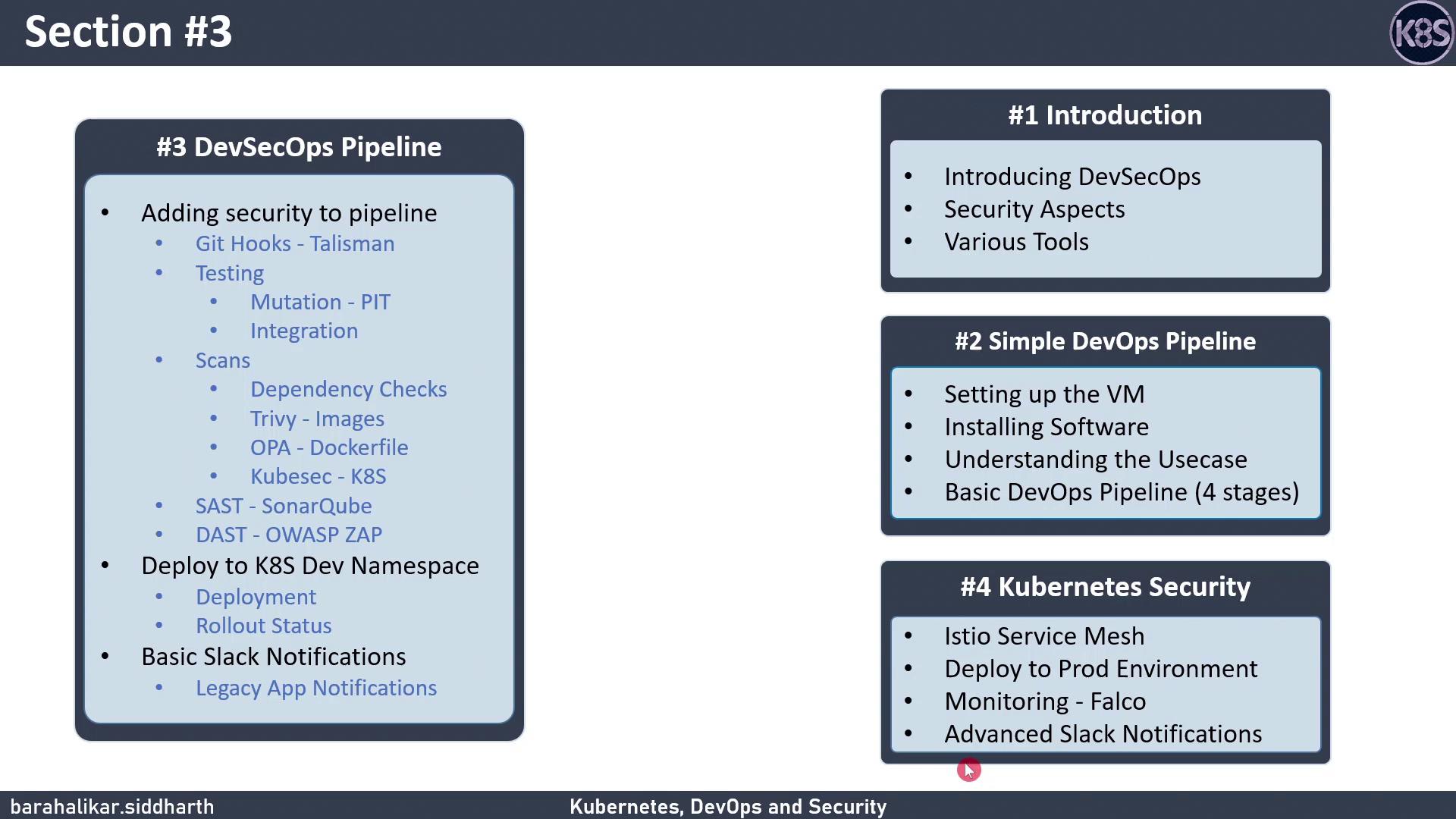DevSecOps - Kubernetes DevOps & Security
DevSecOps Pipeline
Section 3 Topics
Welcome to Section 3! In this lesson, we’ll strengthen our CI/CD workflow by:
- Connecting GitHub for source control
- Adding unit and integration testing stages
- Running vulnerability scans
- Performing dynamic application security testing (DAST)

Prerequisites
Ensure you have a GitHub repository connected and a Jenkins server with the Kubernetes plugin installed.
DevSecOps Pipeline Overview
Below is a high-level breakdown of each stage in our DevSecOps pipeline:
| Stage | Purpose | Tool(s) |
|---|---|---|
| Source Control | Host and version application code | GitHub |
| Unit Testing | Validate individual functions and modules | JUnit, pytest |
| Integration Testing | Test interactions between services | Postman, Selenium |
| Vulnerability Scanning | Identify security flaws in code and dependencies | OWASP Dependency-Check |
| Dynamic Application Security Testing | Simulate real-world attacks against the running app | OWASP ZAP |
3.1 Verify Kubernetes Rollout Status
After deploying to Kubernetes, confirm that your pods have rolled out successfully:
kubectl rollout status deployment/<your-deployment-name> -n <namespace>
If the rollout stalls or fails, troubleshoot with:
kubectl describe deployment/<your-deployment-name> -n <namespace>
kubectl logs deployment/<your-deployment-name> -n <namespace>
3.2 Configure Jenkins for Slack Notifications
Keep your team informed by sending build alerts to Slack. Add the following to your Jenkinsfile:
pipeline {
agent any
stages {
stage('Build') { /* build steps */ }
stage('Test') { /* test steps */ }
// ... other stages ...
}
post {
success {
slackSend(
channel: '#ci-cd',
message: "✅ Build successful: ${env.JOB_NAME} #${env.BUILD_NUMBER}"
)
}
failure {
slackSend(
channel: '#ci-cd',
message: "❌ Build failed: ${env.JOB_NAME} #${env.BUILD_NUMBER}"
)
}
}
}
Slack Setup
Make sure the Slack plugin is installed in Jenkins and you have configured your Incoming Webhook URL under Manage Jenkins → Configure System → Slack.
Next Steps
In Section 4, we’ll focus on Kubernetes security best practices: pod hardening, network policies, and runtime protection.
Links and References
Watch Video
Watch video content